Infinite Canvases
Explore the dynamic capabilities of infinite canvases in Pivot for brainstorming, planning, and collaborative workflows.
The infinite canvas block functions as a versatile platform for brainstorming, planning, and organizing ideas. Operating as a flexible whiteboard, it enables users to visually map workflows, structure projects, and collaborate in real time. Integrated into spaces or rooms, it is ideal for workshops, strategic planning, and idea sharing.
Using Infinite Canvases
Starting with Templates or Blank Canvases
Users can begin their infinite canvas journey by selecting pre-designed templates tailored to specific needs, such as brainstorming, agile workflows, or mapping, or by starting with a blank canvas for ultimate flexibility.
- Templates: Quickly structure ideas using ready-made layouts.
- Blank canvases: Provide freedom for fully customized designs.
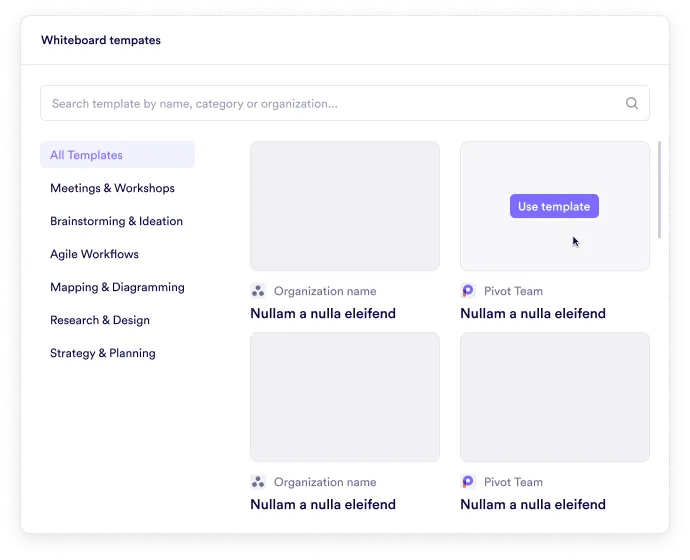
Customization and Collaboration
Once created, infinite canvases offer unlimited tools and customization. Participants can add shapes, text, images, and more, while collaborating in real time. The interface supports multiple cursors, allowing team members to contribute simultaneously and transparently.
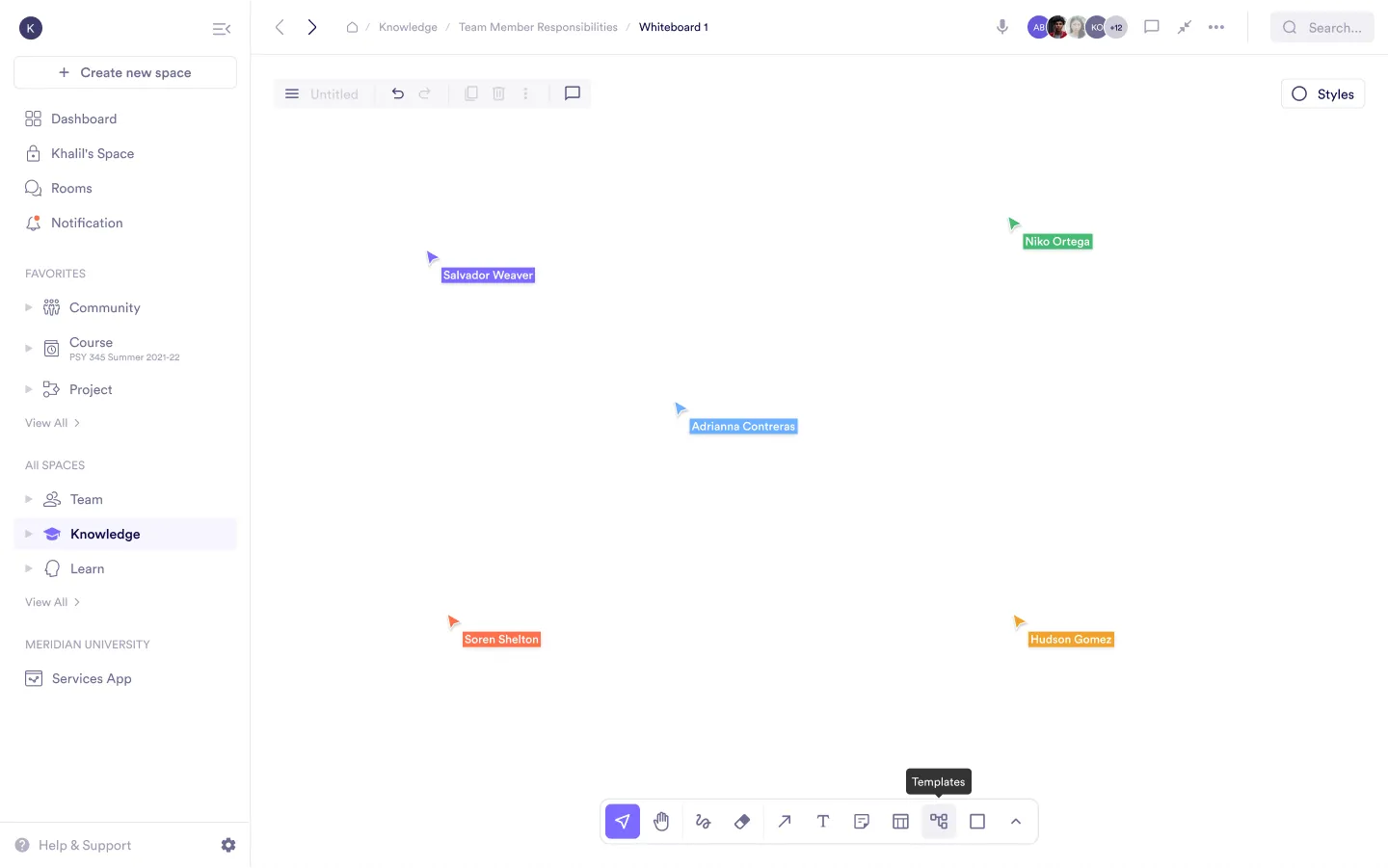
Whiteboard Page Actions
Infinite canvases include a suite of page actions accessible via the toolbar or dropdown menus, enabling users to navigate, organize, and enhance their collaborative experience.
Key Actions:
- Edit options: Modify shapes, text, or other elements directly on the canvas.
- View preferences: Adjust grid visibility, snap alignment, and style menus for better navigation.
- Shape and style tools: Create diagrams or workflows with a variety of shapes and styles.
- Focus mode: Minimize distractions by hiding unnecessary elements.
- Grid display: Enable or disable grid lines for precise alignment.
- Cloning and handles: Duplicate elements or bind shapes for flow creation.
These features ensure a professional and dynamic whiteboard layout, ideal for collaboration.
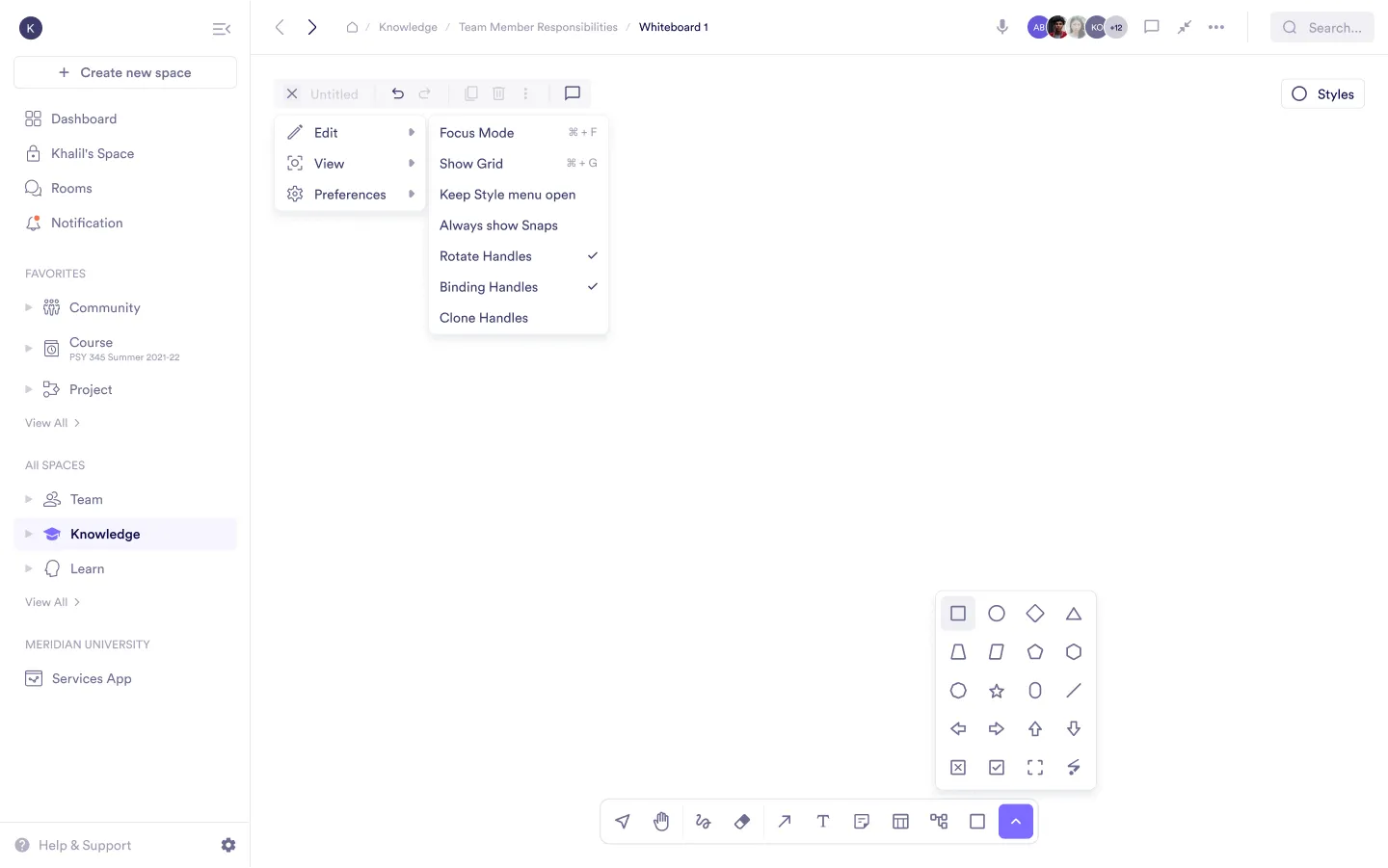
Item Actions
Each item on an infinite canvas—shapes, text, or other elements—comes with specific actions for customization and organization.
Key Actions:
- Duplicate: Quickly copy items for consistent designs.
- Group: Combine items for easier editing and movement.
- Arrange and reorder: Layer and adjust items to refine the visual hierarchy.
- Move: Shift items across the canvas or between sections.
- Cut, copy, paste: Standard actions for item management.
- Align: Ensure alignment (e.g., left, center, top, bottom).
- Stretch or pack: Adjust item spacing for uniformity.
- Delete: Remove unwanted items from the canvas.
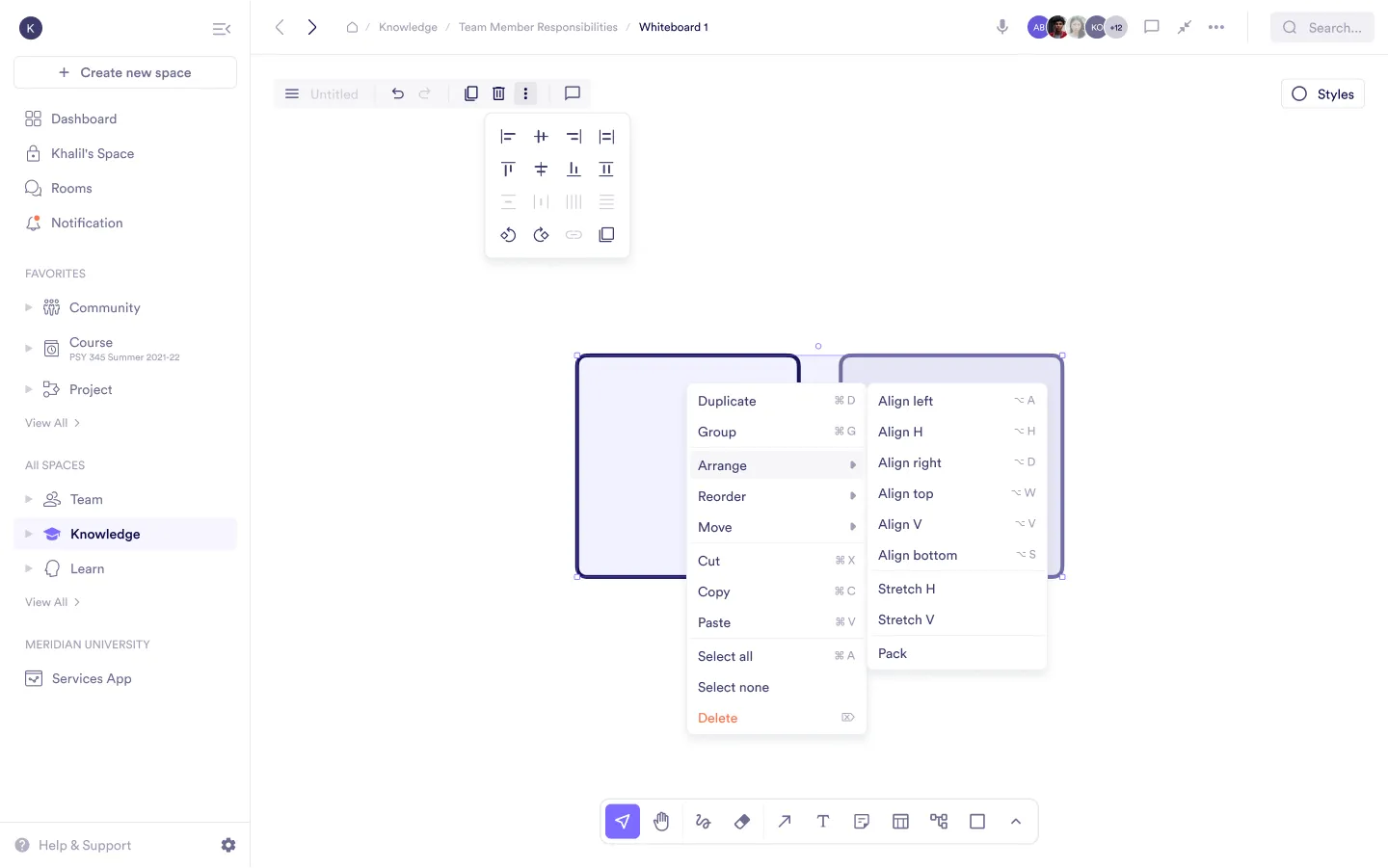
Adding Text to a Whiteboard
Text annotations enhance communication and detail within the infinite canvas.
- Flexible styling: Adjust text size (S, M, L, XL) and formatting (bold, italics, alignment).
- Color options: Apply colors for emphasis or categorization.
- Live updates: Collaborate in real time as text is added or edited.
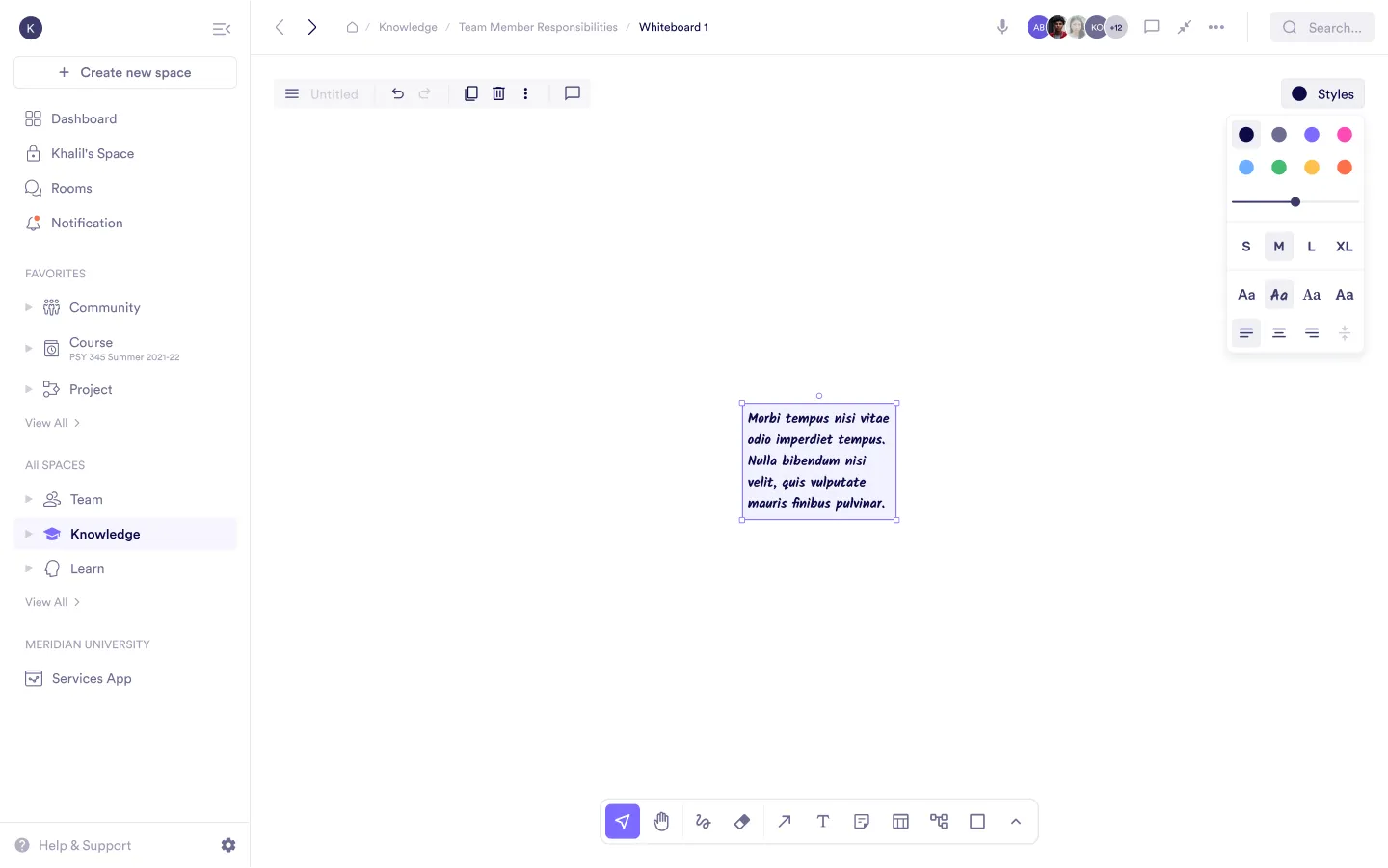
Adding Stickers to a Whiteboard
Stickers are a creative way to emphasize content or organize information on the infinite canvas.
- Customizable text: Add context directly to stickers.
- Color options: Use colors to categorize or differentiate.
- Resizing: Adjust sticker size to fit the whiteboard design.
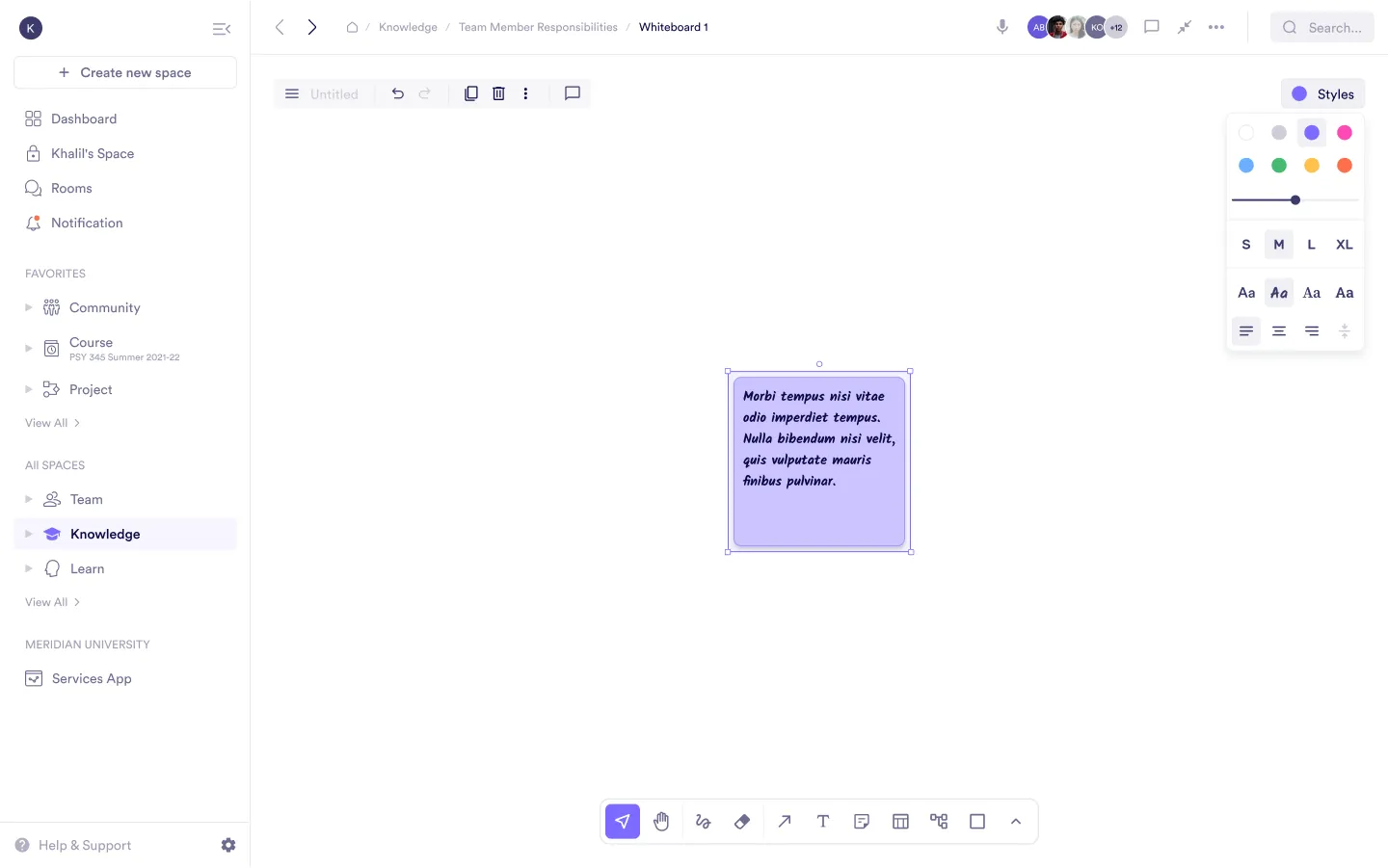
Adding Comments to a Canvas
Comments enable collaboration by allowing team members to provide feedback or ask questions.
- Direct commenting: Click on a specific area to leave comments.
- Mentions: Use @ to tag collaborators and notify them.
- Comment thread: Track and manage feedback in a dedicated panel.
- Real-time updates: See and respond to comments instantly.
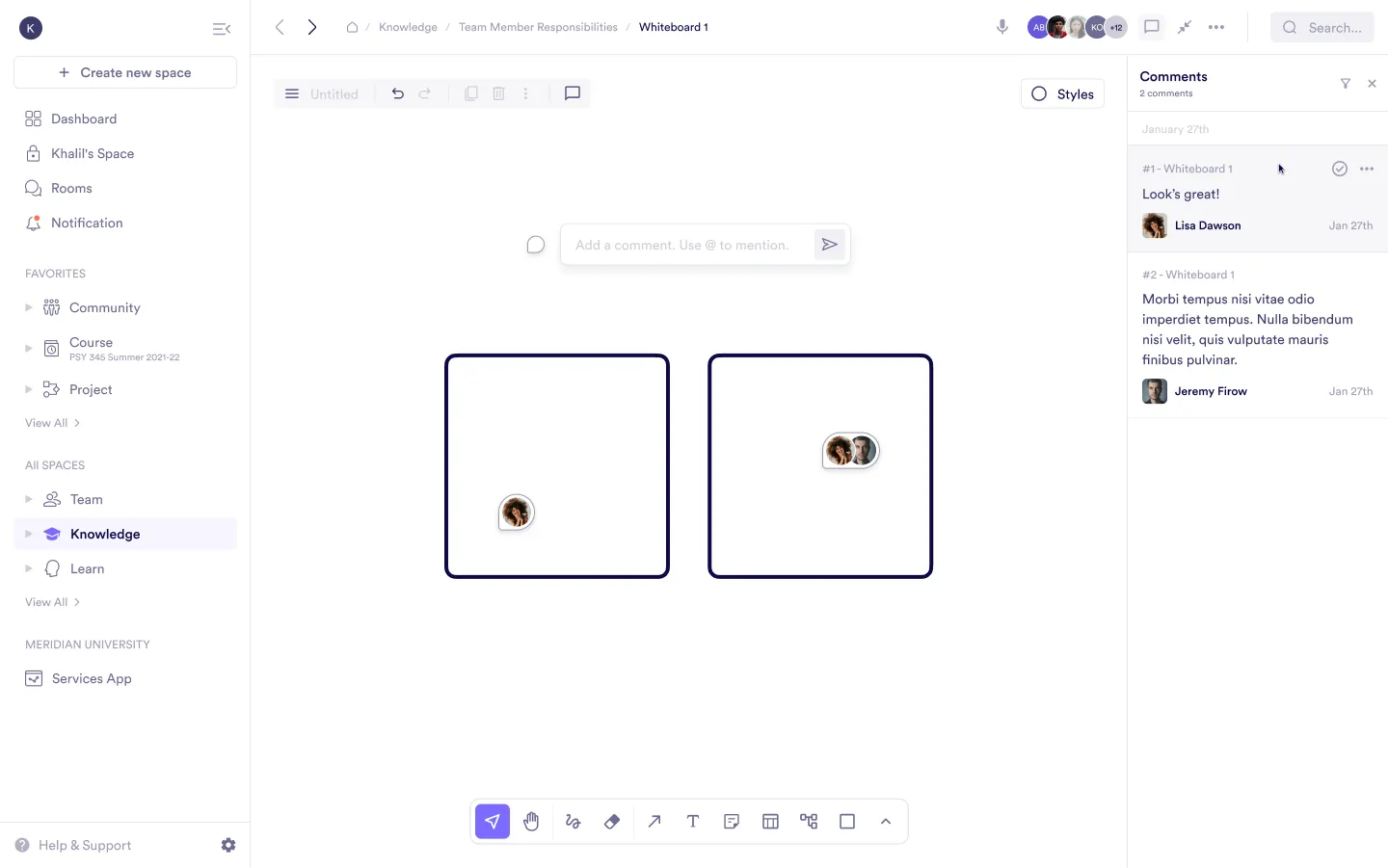
Adding Blocks to a Canvas
Blocks on infinite canvases allow users to dynamically structure and present content, making the canvas even more versatile.
- Integration: Add and organize resources directly on the whiteboard.
- Collaboration: Share information interactively to foster efficient teamwork.
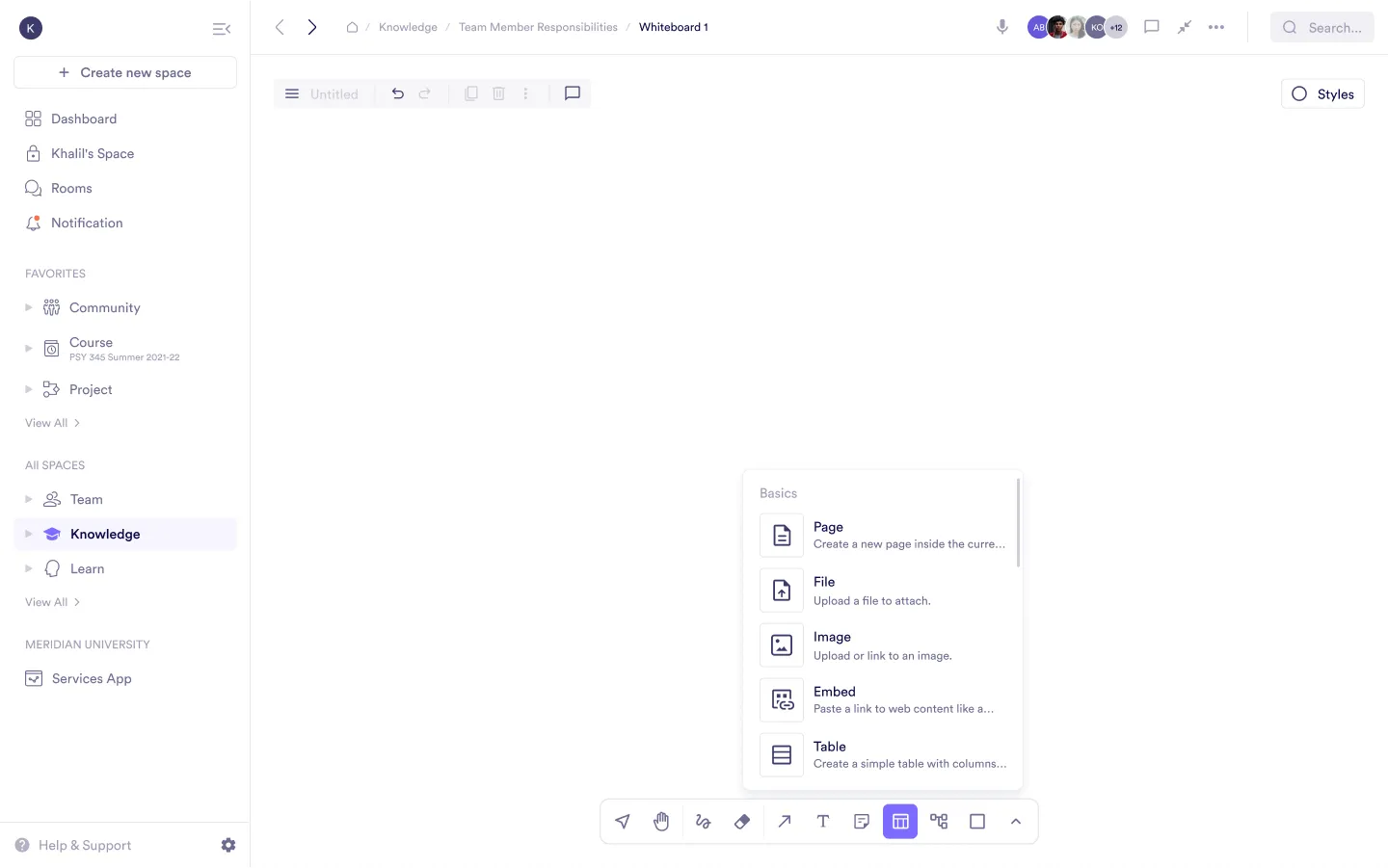
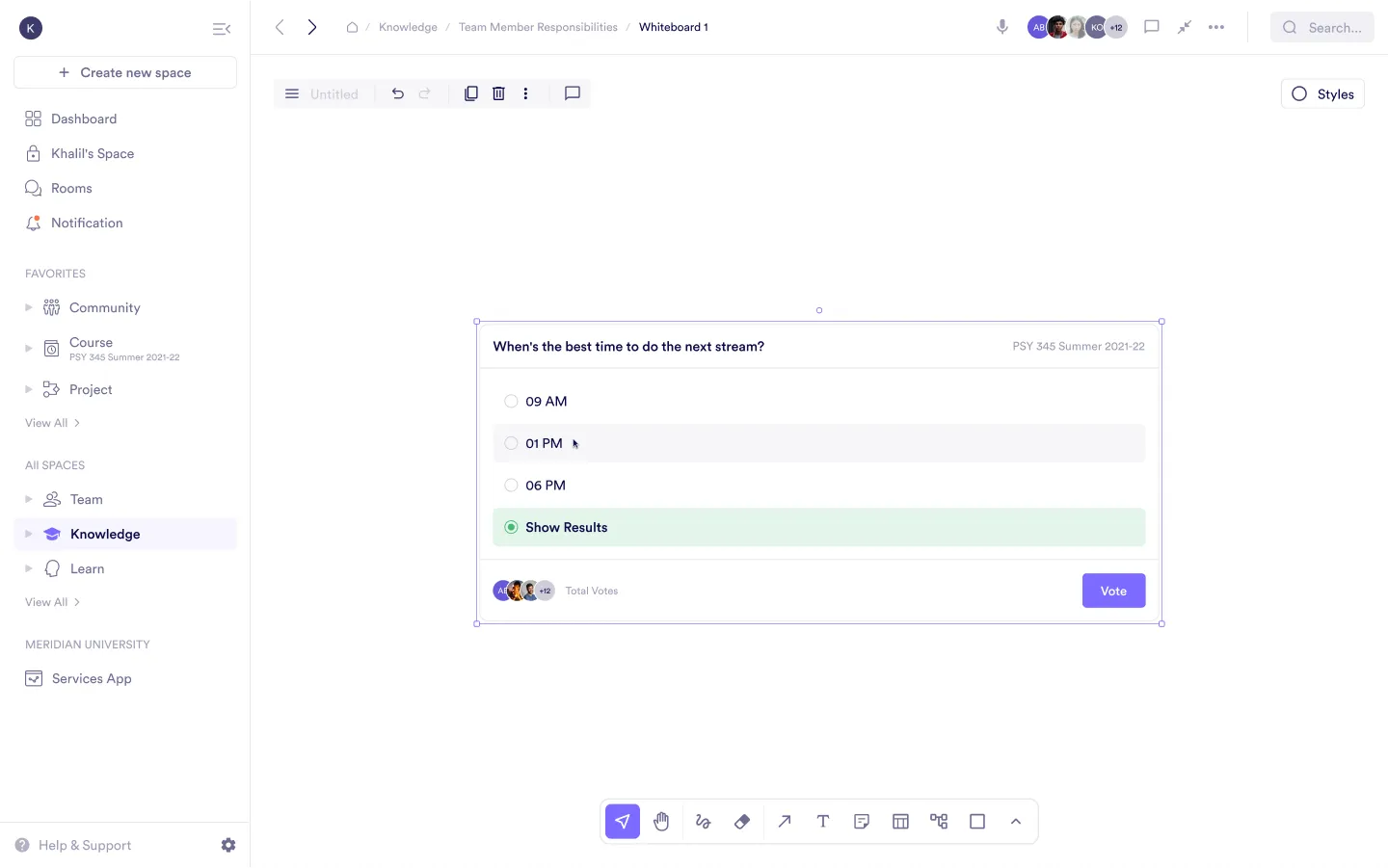
Was this guide helpful?